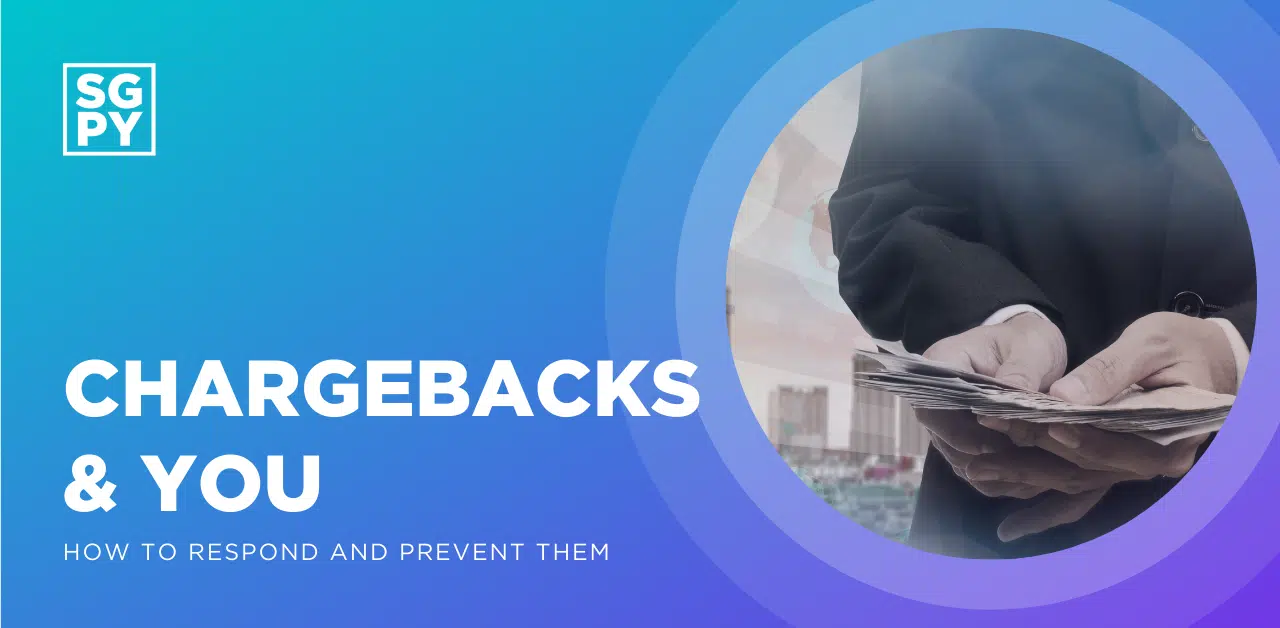Chargebacks & You

How to respond to chargebacks, and how to prevent them
A chargeback is when a cardholder disputes a charge with their bank in order to reverse the charge.
It’s a tool meant to give cardholder’s a last means of defense against rouge merchants who refused to refund the cardholder directly. However, for some merchants, that crucial step gets missed and results in what we call “friendly fraud.”
Friendly fraud is the not the only reason a chargeback can happen. Here are some other common reasons for chargeback:
- Product didn’t match the description
- Product didn’t meet the cardholder’s expectations
- Retailer shipped the wrong product
- Product never arrived
- Order was billed multiple times, or other clerical errors
- Purchase was made fraudulently
But merchants are not left without a defense of their own, they have the ability to dispute a chargeback and win their money back if the transaction was legitimate.
What to do when you receive a Chargeback Notification
When a cardholder initiates a chargeback, the merchant is notified that the funds have been drafted from their account. This money is held “in escrow” essentially, until the chargeback review process is complete. Depending on the amount of the chargeback, a merchant may decide to act or not act. While disputing a chargeback is often a good thing, sometimes the cost of fighting a chargeback may not outweigh the amount of the chargeback.
When the merchant receives a notification from the Risk Management team, it will ask for supporting documents, or evidence, to verify the legitimacy of the charge.
Evidence can include:
- Proof of shipping (usually in the form of a tracking number, shipping receipt etc.)
- Sales or transaction receipt
- Matching bill-to and ship-to addresses
- Proof of delivery (usually in the form of a delivery receipt from a shipping provider, a confirmation email etc.)
- Positive AVS response
- Any conversations with the customer, or any other evidence that the merchant fulfilled the transaction
Here is where things start to get a little tricky. Merchants only have the one opportunity to dispute the chargeback, so submitting as much as evidence as possible in the first instance is the best way to support the merchant’s claims. From here, the banks will decide if the reason the chargeback was initiated is supported by the evidence or not.
How to prevent some chargebacks in the first place
Let’s talk about a few ways merchants can protect themselves from potential chargebacks, which can be costly even if the merchant wins their chargeback case.
- Offer good customer support – Most of the reasons a chargeback happen is because the product did not meet the cardholder’s expectations on purchase. Providing good customer service prevents cardholder’s from having to go nuclear, and instead reach out to the merchant directly for support.
- For Card Present Environments, using an EMV (chip) terminal serves a dual role, protecting cardholders, and protecting merchants. This only applies both ways though, if merchants are using an EMV terminal to process payments. Payments taken via magnetic swipe leave the merchant liable for any damages to a cardholder. If your merchant does not use an EMV terminal, they are liable for almost every transaction they process in the event of chargebacks and data breaches. If your merchant needs a new EMV terminal, please reach out to ISOSupport@signapay.com.
- For Card Not Present environments, utilizing features like asking for a card security code or using the Address Verification System offer an extra layer of security to prevent card fraud from being used on you.
- Keep your records of sales and receipts for at least 1 year. This is not only good business practice, but in some rare cases, cardholders can chargeback a transaction from up to 1 year previous.
Recent blog posts
The latest industry news, interviews, technologies, and resources
Strategies for Improving Cost Control and Expense Control
Boosting Your Bottom Line: Strategies for Improving Cost and Expense Control In the fast-paced world of business, keeping a tight grip on costs and expenses is essential for maintaining profitability …
No-Fee Payment Processing: What Businesses Need to Know
No Fee Payment Processing: Understanding Surcharging, Cash Discounts, and Dual Pricing Credit card transactions offer convenient payment options for consumers but often come with fees that can burden businesses. Fortunately, …
Understanding PCI Compliance: Safeguarding Your Business
Discover the essential role of PCI compliance in safeguarding sensitive payment information in today’s digital landscape. Learn about the Payment Card Industry Data Security Standard (PCI DSS) and its stringent requirements for protecting cardholder data across online, in-store, and mobile payment channels. Explore the impact of PCI compliance on data security, operational efficiency, and customer trust. Discover how adherence to PCI standards can mitigate financial risks such as regulatory fines and reputational damage, while enhancing long-term business sustainability. Explore more about PCI compliance and secure your business’s future today.